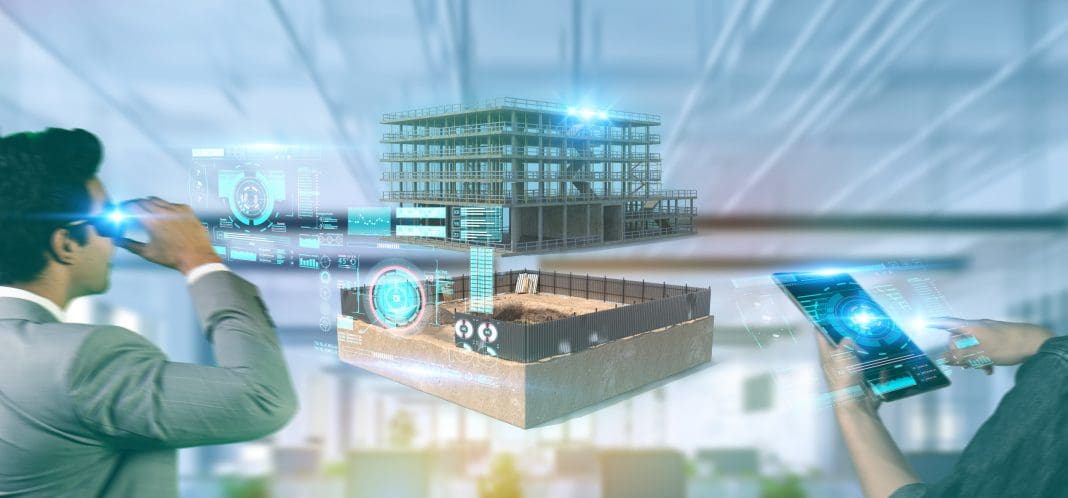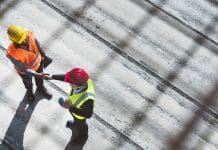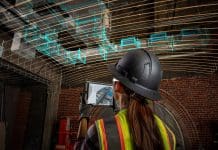The new BS ISO/IEC 30173 standard aims to formalise the key elements of a digital twin. Dan Rossiter FCIAT, built environment sector lead at the Chartered Institute of Architectural Technologists examines the standard’s definitions
For at least the past five years, the built environment, as well as other economic sectors, has been investigating ways of using digital twins. However, several activities to bring stakeholders together have been thwarted by a lack of consensus in relation to what a digital twin is.
Earlier this year BSI, the UK’s national standards body, published BS ISO/IEC 30173. This standard looks to formalise some of the key concepts that constitute what a digital twin is, as well as some key terms and definitions.
So, what is a digital twin?
BS ISO/IEC 30173 provides a definition:
- Digital twin
Digital representation of a target entity with data connections that enable convergence between the physical and digital states at an appropriate rate of synchronisation.
[Source: ISO/IEC 30173:2023, 3.1.1]
While this definition is helpful, it is also quite complex. So let’s break it down.
Target entity. The target entity, simply put, is the subject of the digital twin. BS ISO/IEC 30173 describes these as being “real” things like components, assets, systems and processes. The subject is then observed through data connections like sensors.
Digital representation. The digital representation is the digital version of the target entity. Depending on the subject, the way it is digitally represented may change.
For example, it may be useful to represent the shape of a component graphically (ie, 3D model) but a process or system may need to be represented more conceptually (eg, as a diagram or a model notation).
Much like with BIM, digital twins aren’t about 3D models; they are about the bi-directional exchange of pertinent information.
Convergence. Perhaps, subtly, the most significant part. Convergence is the act of coming together. In this instance, convergence can be achieved in three different ways:
- The digital representation changes to reflect the target entity. Example: A component, which is being tracked, is moved. Once in its new position, its location is updated with new coordinates.
- The target entity changes to reflect the digital representation. Example: Someone sets a thermostat which is monitoring a living room; the thermostat triggers the room to warm up.
- Both the digital representation and target entity change to meet in the middle. Example: A complex algorithm behind a series of interconnect digital twins may influence several entities and representations concurrently.
An appropriate rate of synchronisation. The idea that this convergence occurs as often as needed. For use cases relating to life safety, (near) real-time may be a requirement. However, for other use cases this convergence would happen less frequently.
So is [X] a digital twin?
Maybe? Let’s use an example, the Met Office Weather Map. If I go to metoffice.gov.uk, I can see a digital representation of the UK weather system in the form of an interactive map.
Weather stations, like BrentfordTW8, provide a data connection by sending weather data to the Met Office’s Weather Observations website.
This data connection allows the data behind the interactive map to converge with observed data, at an hourly rate. As such, it appears that the Met Office Weather Map is a digital twin, as defined within BS ISO/IEC 30173.
So there we have it. Hopefully, standards such as BS ISO/IEC 30173 can provide the support needed to help stakeholders come together to talk about digital twins in a more consistent manner.
In doing so, we can look to advance their application within the built environment, alongside other innovations such as artificial intelligence, robots and cyber-physical systems.
Perhaps next time someone begins to discuss digital twins with you, you might think to check them against BS ISO/IEC 30173.
Dan Rossiter FCIAT
Built environment sector lead
Chartered Institute of Architectural Technologists
Tel: +44 (0)20 7278 2206
www.architecturaltechnology.com

















